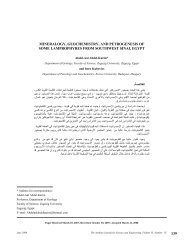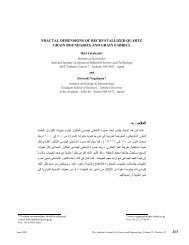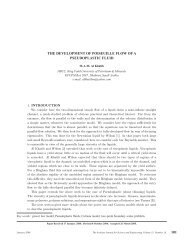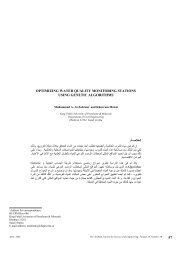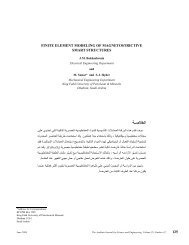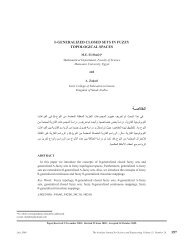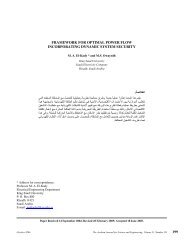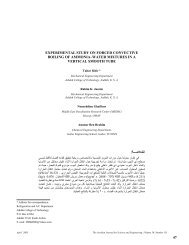lambert universal variable algorithm - Arabian Journal for Science ...
lambert universal variable algorithm - Arabian Journal for Science ...
lambert universal variable algorithm - Arabian Journal for Science ...
Create successful ePaper yourself
Turn your PDF publications into a flip-book with our unique Google optimized e-Paper software.
M.A. Sharaf, A.N. Saad, and M.I. Nouh<br />
3. COMPUTATIONAL DEVELOPMENTS<br />
3.1. Computations of Stumpff’s Functions C2(ψ) and C3(ψ)<br />
An efficient <strong>algorithm</strong> was developed recently [13] <strong>for</strong> computing Cj(ψ); j = 0, 1, 2, 3. In what follows, this <strong>algorithm</strong><br />
will be modified to compute C2(ψ) and C3(ψ) only.<br />
It is most efficient to compute C2 and C3 by series (Equation (2.15)). On the other hand, it is inefficient to use the<br />
series except <strong>for</strong> small values of the argument; but if the input argument is too large, it can be reduced by using<br />
Equations (2.17) and (2.18) as illustrated in what follows.<br />
Now, suppose that the series <strong>for</strong> C2 and C3 are only to be used <strong>for</strong> values of ⎪ψ⎪ ≤ ψm < 1. The series might be found<br />
using a loop that would include a test to terminate it when the necessary accuracy was achieved according to a given<br />
tolerance ε (say). Thus, if we write C2(ψ) or C3(ψ) as<br />
C( ) H , (3.1)<br />
ψ =∑ N<br />
k=<br />
0<br />
k<br />
then, it is easy to show from Equation (2.15) that, the H’s coefficients satisfy the recurrence <strong>for</strong>mula<br />
ψ<br />
Hk+ 1 =−<br />
Hk<br />
, (3.2)<br />
2( k + 2)(2 k+η)<br />
where (η, H0) is (3, 1/2) <strong>for</strong> computing C2(ψ) and (5, 1/6) <strong>for</strong> computing C3(ψ), while the positive integer N is<br />
determined by the condition that<br />
H ≤ε.<br />
(3.3)<br />
N<br />
The computations of C2(ψ) or C3(ψ) <strong>for</strong> ⎪ψ⎪ ≤ ψm < 1 are illustrated by the following <strong>algorithm</strong>.<br />
3.1.1. Computational Algorithm 1<br />
• Purpose: To compute C2(ψ) or C3(ψ) using Equations (3.1) and (3.2), together with the corresponding value of N.<br />
• Input: ψ, H0, η, ε, M (large positive integer).<br />
• Computational Sequence:<br />
1. Set<br />
H = H0<br />
C = H0<br />
K = 2<br />
L = η<br />
2. For i = 1, 2, …, M, do:<br />
ψ<br />
Set H =− * H<br />
2* K * L<br />
If ⎪H⎪≤ ε go to step 3<br />
C = C + H<br />
K = K + 1<br />
L = L + 2<br />
3. N = i<br />
4. End<br />
92 The <strong>Arabian</strong> <strong>Journal</strong> <strong>for</strong> <strong>Science</strong> and Engineering, Volume 28, Number 1A. January 2003



